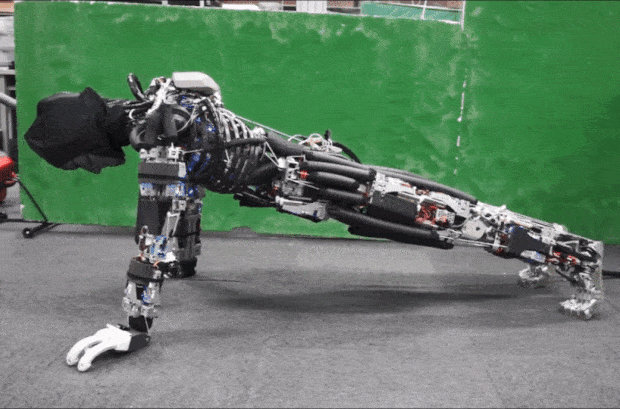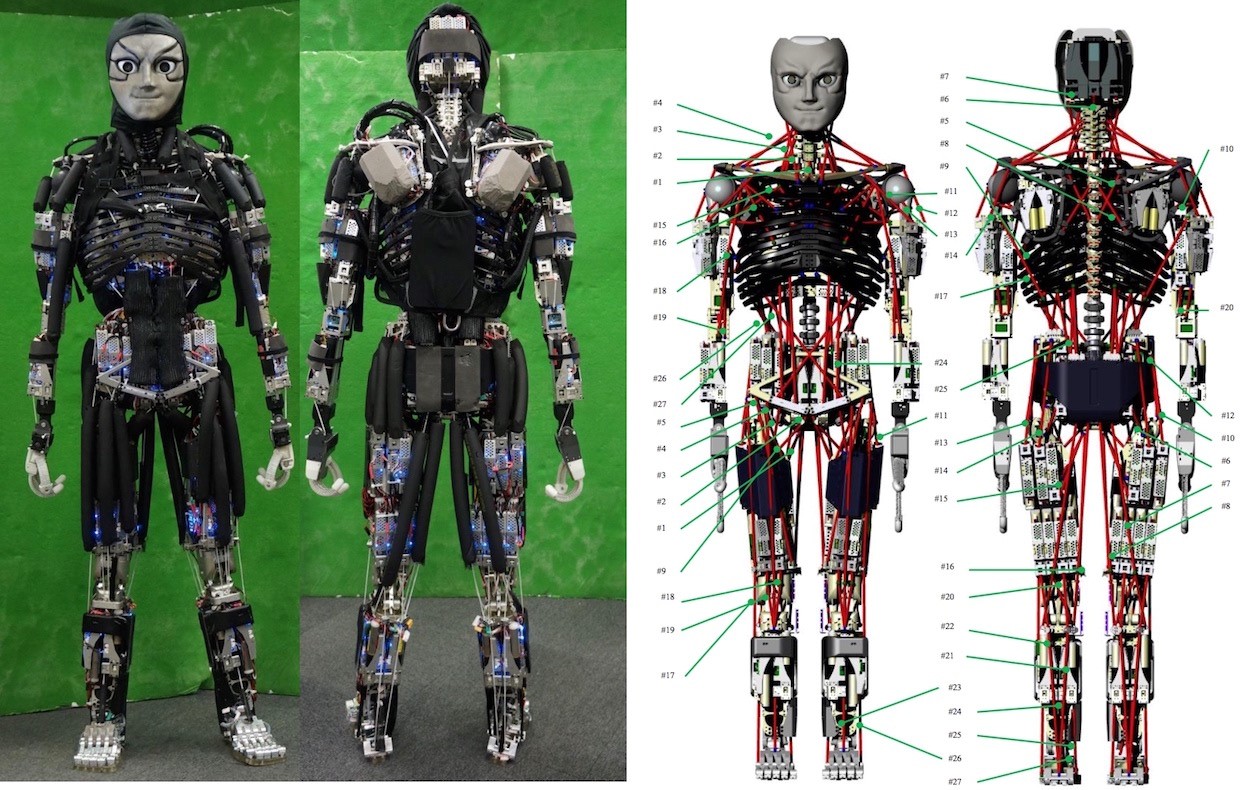
Researchers from the University of Tokyo’s JSK Lab have come up with an efficient way to cool off waters hard at work, by “sweating” water right out of their exoskeleton. Demonstrating the technology at the IEEE/RSJ Internal Conference on Intelligent Robots and Systems (IROS), Professor Masayuki Inaba and his team built Kengoro, a humanoid robot capable of performing pushups.
Like humans generate heat as a byproduct of locomotion, humanoid robots and other dynamic machines place near-constant torque demands on their motors to point where heat becomes a major design constraint. But unlike humans who evolved sweat glands to cool off, machines require robust cooling infrastructures made up of fans, heat sinks, and radiators.
The 1.7-meter tall, 56-kilogram (123.5-lbs) musculoskeletal humanoid Kengoro requires 108 motors to move, leaving almost no additional space for the dozens of fans, heat sinks, tubes, and radiators required in an active water cooling system.

Inaba and his team resolved the issue by using the robot’s very own skeletal structure as a coolant delivery system. Instead of circulating water throughout the frame, a solution requiring a pump and radiator, the team went with a passive technique that allows water to “seep out through the frame” around the motor, cooling it while evaporating—similar to “sweating.”
Kengoro’s frame was laser sintered from aluminum powder to achieve the right level of permeability needed for the solution to work. By altering the energy density of the laser during fabrication, the team could dictate the level of permeability of the end product and build seamless structures containing microchannels of both high and low permeability. This allows water to seep from an inner porous layer into a more porous layer near the surface of the frame where it can evaporate.
In testing, the passive method of cooling worked three times better than air cooling, and “significantly better” than solely circulating water through the interior change, although not as efficient as radiator cooling. A cup of deionized water supplies Kengoro with enough coolant to do 11 minutes worth of continuous push-ups without overheating its motors. Like it us, it needs to keep itself hydrated to stay cool.
Source: IEEE Spectrum
Advertisement
Learn more about Electronic Products Magazine





